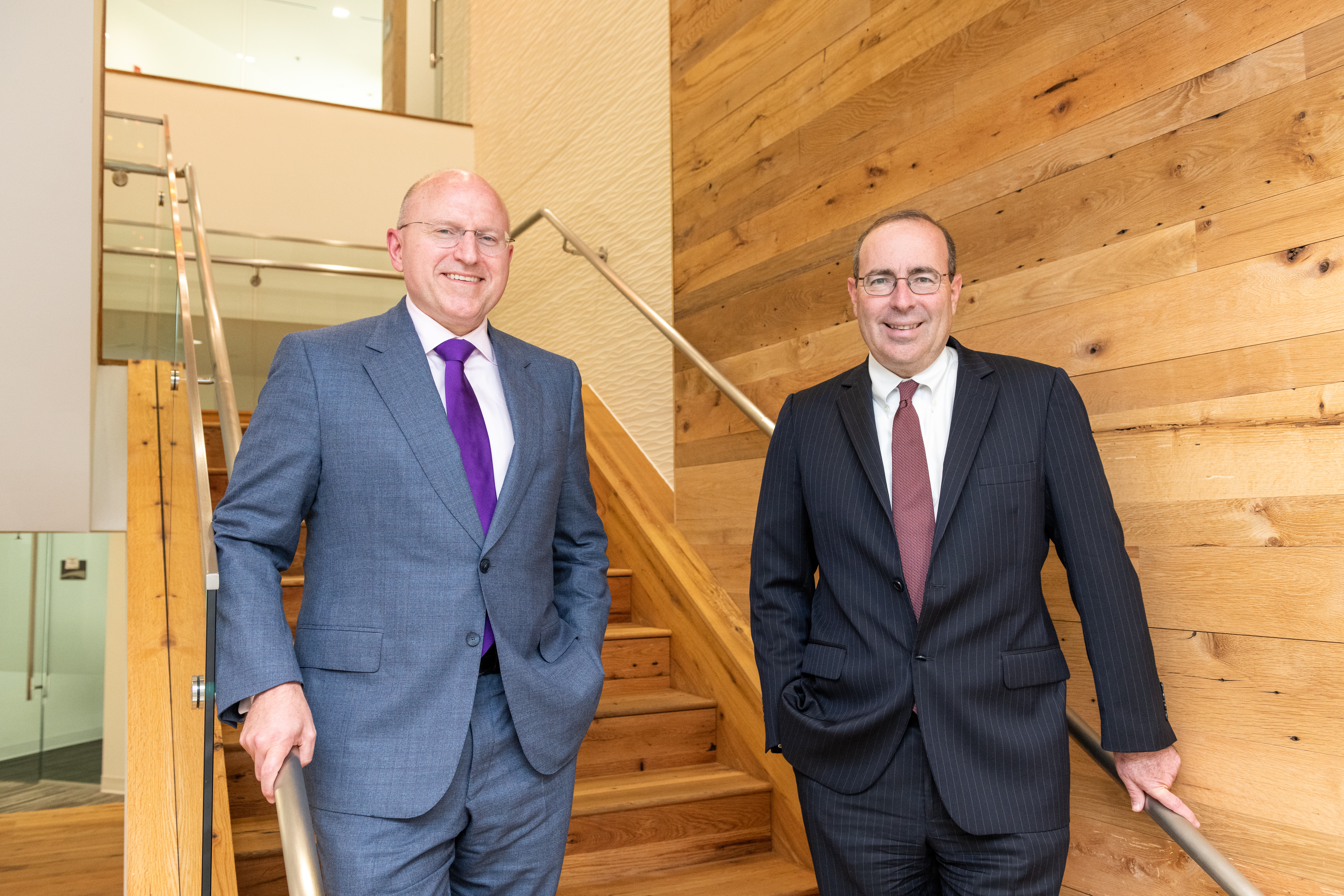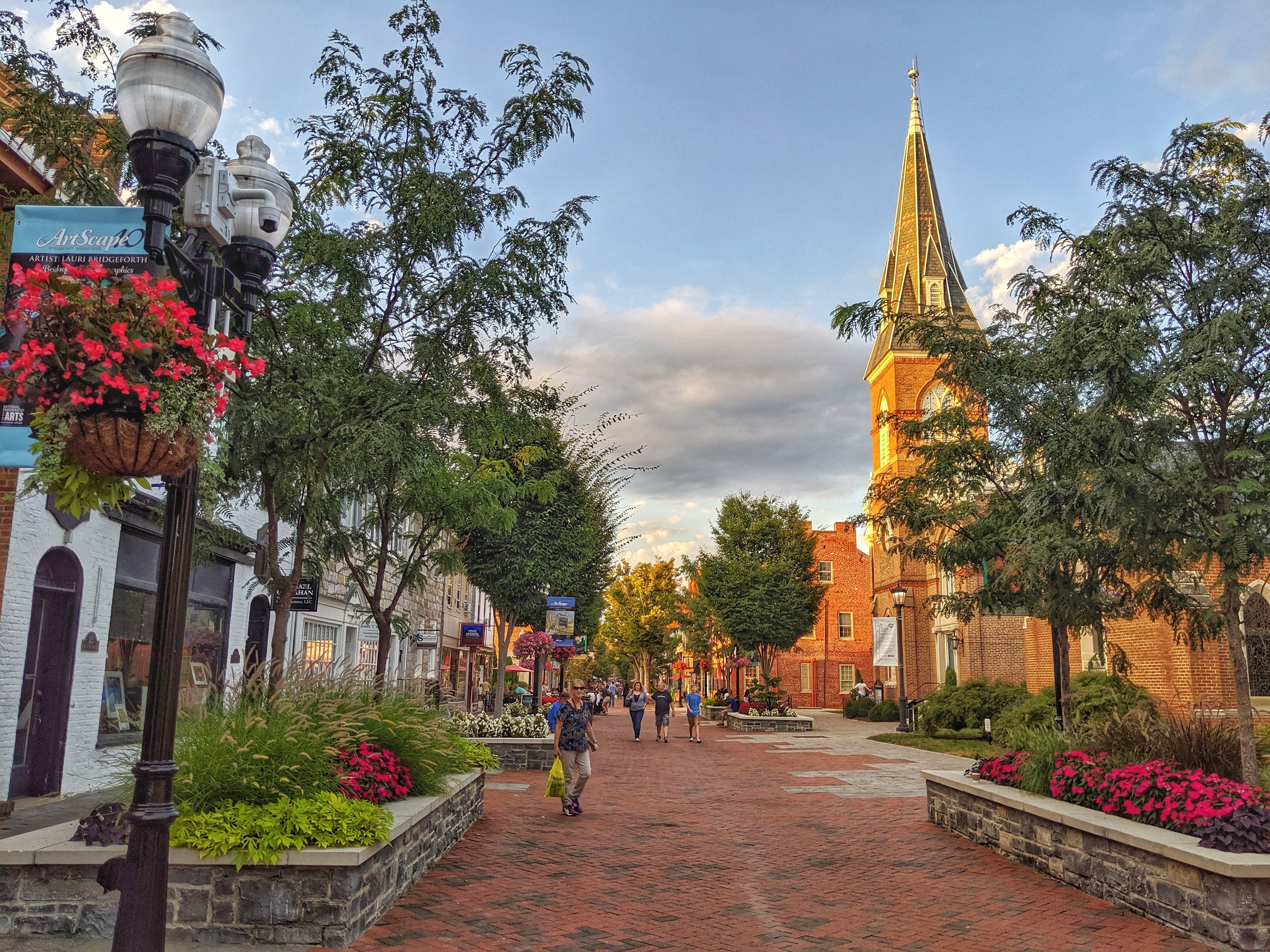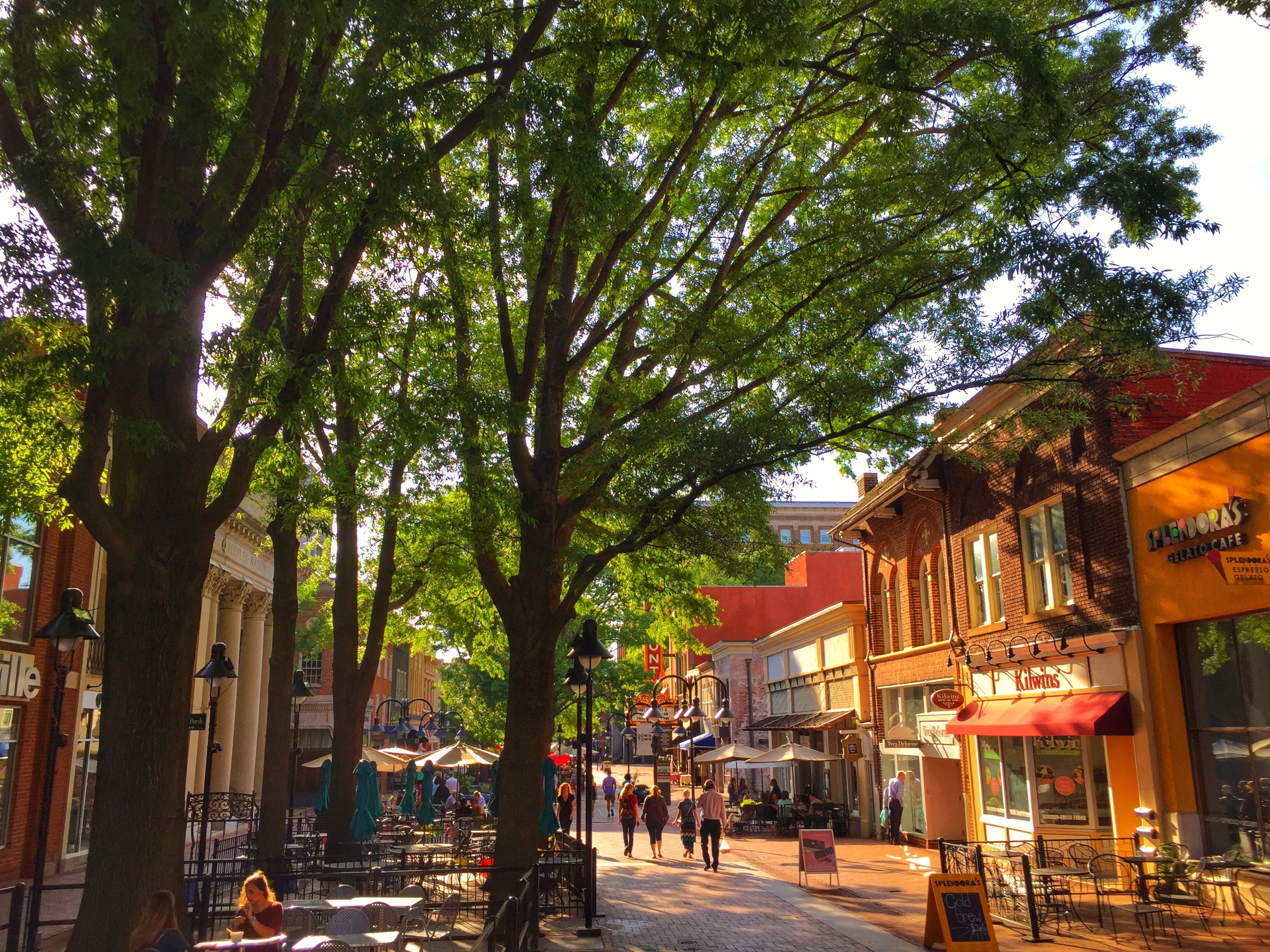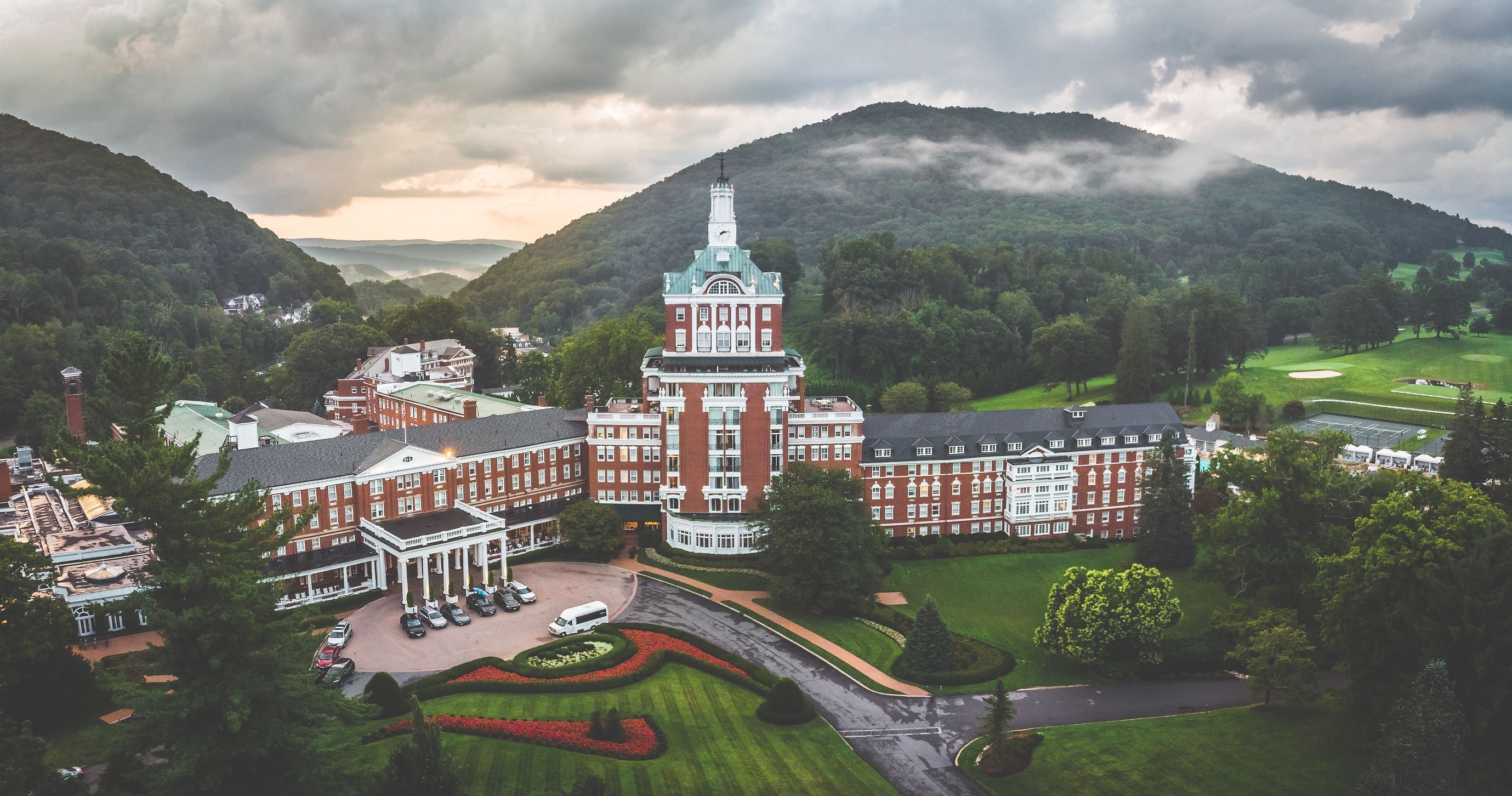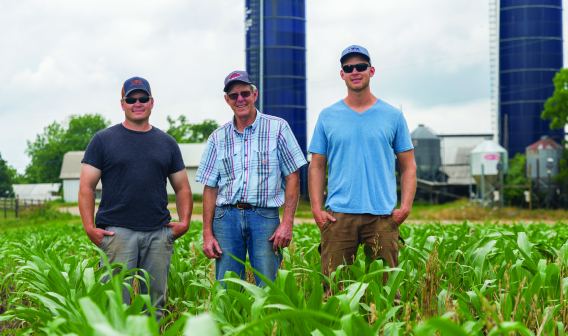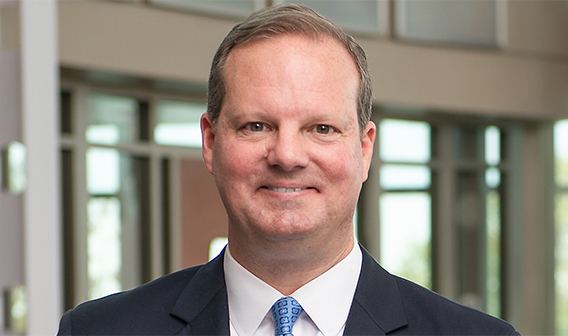Moving the Needle in Rural Communities
A Conversation With Tom Barkin
Tom Barkin is the president and chief executive officer of the Federal Reserve Bank of Richmond. Barkin joined the Richmond Fed in January 2018. In his time in Richmond, Barkin has taken an interest in the issues leading to a divide between urban and rural areas in the Fed’s Fifth District.
Stephen Moret: How did you come to lead the Fed in Richmond?
Tom Barkin: I led McKinsey’s offices in the Southeast for 10 years, and I spent 30 years as a consultant. I was a very young person in my own mind, but I was one of the oldest people there. When I retired, I got a call from the Richmond Fed asking me to interview to be the president.
I wasn’t a complete stranger to the Federal Reserve. I’d been on the board in Atlanta, I had chaired that board in ’13 and ’14, and I really enjoyed watching what the Federal Reserve did, especially during the last downturn.
When I got the call, I thought, this seems like a great opportunity for me to continue to give back. I know there’s a ton to learn. I’d been in Richmond a bunch and thought it was a fun town, and so we embarked on a new adventure.
Moret: Can you tell us about both the geography that the Fed’s Fifth District covers, as well as the broad function it plays?
Barkin: There are 12 Federal Reserve Banks. Our district starts in South Carolina and includes all the states up through Maryland, West Virginia, and D.C. Virginia, obviously, is a very important part of our district. What you read about in The Wall Street Journal is our role in monetary policy. But in addition to that, we supervise the banks in our districts, so our oversight includes Bank of America, BB&T, and Capital One.
Moret: You’ve been on the job about 18 months. Can you give us a sense of what you’ve learned about the Fed’s Fifth District that you perhaps didn’t know before, and any general observations of the region you’ve gotten to know better in that time?
Barkin: I’d spent a lot of time here, but hadn’t really thought about it as a central banker. Our mandate involves stable prices and maximum employment. One of the first things I tried to do was to understand the employment situation in our district. I’d say Washington, D.C., and Baltimore are pretty unique. And then you’ve got seven or eight vibrant, thriving new Southern cities that have their issues. But, on the whole, employment’s very strong.
Richmond would count in that. I’d put Northern Virginia there, Charleston, Greenville, Charlotte, Raleigh. But the thing that really hit me in the analysis is that most of our district is small towns, and employment isn’t working the same way in the small towns as it works in the bigger cities.
Moret: You gave a talk in March at the Virginia Governor’s Conference on Agricultural Trade. For context, we’re very passionate about rural development in Virginia here at VEDP. I’ve read quite a bit about it, and I have to say, your talk was one of the most thoughtful presentations I’ve seen.
It was entitled, “Moving The Needle In Rural Communities.” Really outstanding piece of work. Could you tell us how this came to be a passion for you and a focus in your work at the Fed?
Barkin: We’re very focused on labor markets working for everybody, and four things got us interested. One is education. It’s absolutely the case wherever you go that higher education is associated with higher life outcomes, whether that be health or wealth, resiliency in a downturn, or employability. One metric might be the percentage with a bachelor’s degree. It’s 35% in the bigger cities, 22% in the smaller towns. So, we look hard at education, and when we get into it, one of the things you find is it starts at the very beginning, in pre-K, again with very significant differences between the smaller towns and the bigger cities on completion of pre-K enrollment. And, so, our Fed and the Minneapolis Fed have done a lot of work on this. The notion of how we think about helping people in smaller towns get engaged at the beginning is one thing I’d put on the table. States like West Virginia and Georgia have gone to basically universal pre-K.
Second is connecting people to jobs. The job market is as hot today as it’s been in 50 years, and employers I talk to all over the district are struggling to find workers. On the other hand, a lot of people are on the sidelines. How do we get those people connected to jobs?
Moret: It’s one of the great paradoxes of the current United States labor market.
Barkin: It’s true. When I took economics in college, one of the assumptions economists make is that labor markets are perfectly mobile, that any person who wants a job can get a job, and any employer who wants a worker can get one. It’s not that true. In these small towns in particular, a lot of people don’t have access to the jobs.
Moret: There’s a skills gap. It’s a geographic inequality.
Barkin: An access gap. One of the things I’m really intrigued with is the role community colleges play in connecting people to jobs. Virginia is a great example of a program where we’re really investing in helping people who want jobs, and what it takes to get certificates so they can get access to those jobs.
One of the things I’ve run into is that it’s hard to get funding for a lot of these things. Degree programs, for example, are funded by Pell Grants, but certificate programs aren’t. A certificate program is actually cheaper and has a higher job placement rate, so, why wouldn’t we try to funnel both scholarship money and community college money toward those things?
A third thing we’re focused on is isolation. It’s almost definitional. If you’re in a smaller town, you’re more isolated. But that doesn’t mean you don’t have social networks. Actually, a lot of research shows people are more socially connected in smaller towns than in bigger cities. But if you’re looking for role models — if, for example, you want to go to college or become an entrepreneur — your odds are a lot higher if you grew up with people who had gone to college or were entrepreneurs. In particular, in a world where hospitals, banks, and colleges are closing, you lose some of these great role models in some of these small towns.
And then I wouldn’t be complete if I didn’t talk about health. A lot more people are on disability in smaller towns. Some of it’s disability, but some is also economic, and the incentives are very clear. Once you’re on disability, it’s hard to get off, but I’m hopeful a hot job market will move that. And then, of course, we have opioids, which are a tragedy across our district, but particularly so in the smaller towns.
Moret: One of our interviews for this issue is with Beth Macy, who wrote “Dopesick” and “Factory Man.” She’s spoken articulately about that, and it’s an issue that has crushed many rural and small town communities, not just in Virginia, but across the country.
Barkin: There’s a lot of work being done at the front end of that in terms of prescription rates and everything else. But there’s an embedded base of folks who are not well, sadly.
I’m intrigued with some of the conversations we’ve had with people in addiction-to-work programs, including folks who apply for a job and fail a drug test. You immediately give them the opportunity to get into an addiction-to-work program. There are some interesting things happening there that I hope can get scaled and be even more successful.
Moret: The more I look at America’s rural growth challenge, there’s clearly no silver bullet, but there’s almost a constellation of topic areas to be tackled simultaneously. Have you seen any states or regions that you think are standing out here, or do you think the leaders in rural development have yet to emerge in the country?
Barkin: When you find small-town markets that are really succeeding, there’s always a story that means you’re going to discount it. For example, you could say Charlottesville would be a small-town market that’s truly succeeding, but maybe it helps to have the University of Virginia there.
So, I focus less on saying, “Oh no, no, here’s a winner,” because someone will explain it away. I try to focus on the elements of those people I see winning. One element is they can articulate a story, and the story isn’t necessarily marketing to companies or people to come there, but actually marketing to themselves. If you’re in a town that’s making it happen, and you talk to the people in the town, my simple little metric is: They can describe why their kids would come back.
I actually walk out of most of those discussions more encouraged than discouraged. There are, of course, difficult cities and markets, but I think there’s a lot to sell in these small towns. Then, obviously, you’ve got to work together on it.
The fourth piece is funding. There’s more funding available than people think. You will see in the ones that seem to be making the most progress, a clever, opportunistic set of access to funding. That could be GO Virginia funding, it could be federal funding, but they’re really being creative and thoughtful about bringing funds into the market.
And I don’t want to be too much of a downer, but patience is a pretty important piece of it. This does take a long time.Transforming a community takes a generation. It’s done a day at a time.
Moret: One of the things we’ve embraced at VEDP in looking at each of our rural regions and smaller metro areas is that we want to ensure we’re doing everything we can to help position them to grow. I think relatively unique is that Virginia now looks at its success not just as the state as a whole, but how we’re doing in each of our constituent regions across Virginia. It’s something we’re tracking and trying to be very deliberate about.
Barkin: I like what I understand of the GO Virginia model, where you really do try to think about it in regions. I think that’s a superb way to go.
Moret: That’s a great example, and one with a lot of promise as it continues to develop. How important do you think broadband is for rural communities?
Barkin: If you want to break down isolation, I think you have to start with infrastructure. Infrastructure 50 years ago meant highways, and there was a lot the highway system did to bring this country together.
I think infrastructure today is the internet. It’s a fundamental. You’ve got to have access. That’s true for operating every day, shopping, whatever. How could one be an entrepreneur and build a business if you didn’t have access to it? So, if you believe as I do that we can’t find a Toyota plant for every city, then you have to have small businesses starting up. I think broadband is critical there.
If you want to grow the population of a community, it starts with people who grew up there wanting to come back. I think it’s awfully hard to imagine a millennial coming back to a city where they didn’t have access to high-speed internet. And so the answer is yes, it’s very important.
I would also make the point, there’s a lot of money out there, there are lots of fights about who pays. You can lay the pipe, but you’ve also got to make it at a price that people can afford it. As difficult as it was, we somehow did rural electrification in the ’30s. If we can do rural electrification, I don’t see why we can’t do rural broadband access.
Moret: I love hearing that. We believe that, too. We’ve been really grateful for the work the Governor and General Assembly have done to dramatically increase funding for rural broadband access. They’re essentially trying to subsidize the private sector to come into areas that would not be economic to serve, or it would be a long time before the private sector got to them. Virginia, for the first time, is starting to think about getting to near-ubiquitous broadband access over seven to 10 years, which is a pretty exciting prospect. Are there other things that you think Virginia or other states should be thinking about and how state, local, and regional leadership can strike a balance to most effectively support rural development?
Barkin: I think building any small town requires inclusive local leadership, period, but not every place will have that. By the way, it’s hard to say the strategy is to grow absolutely every small town anywhere.
As we were saying earlier, I think of it as regions. You’ve got to grow regions, and you need inclusive, integrated local leadership at a regional level. But there are things that are very important for states to think about. I talked about pre-K and getting every kid in every region the chance to get off to the right start. As I said, some states have invested more in pre-K, and I think that’s a very useful place to start.
I’ve been impressed with the public school systems in many of Virginia’s rural markets. If I compare Virginia to some other states, I think several of your rural markets are solving public school problems. But let’s not forget that we need that in all rural districts. I think FastForward is a very good program in Virginia, and I know it’s funded at some level. I think expanding that is well worth thinking about.
Moret: Is there a role for federal monetary policy to support the needs of rural America?
Barkin: Federal monetary policy is a relatively blunt instrument. We move rates up and we move rates down. It’s true that when we run an expansion as long as the expansion we’re currently overseeing, it does help people on the fringes of the workforce get back into the workforce. Our chairman and many others have talked about the advantages we see in that. We always have to be watchful on the other half of our mandate, which is stable prices. We do watch and we’ve been running a very hot economy for some time now under the theory that we’re bringing more people back into the workforce. Of course, that would include small towns.
Moret: Indeed. In what ways do you think the Fed and state leaders can connect with these communities to help them grow their economies? Thinking about things like labor force participation, clearly there’s a big gap. There are different reasons for that, but I don’t know if anyone has cracked the code on what it would take to close those labor force participation rate differences between rural areas and more urban areas or metros.
Barkin: One of the pieces of research I’m doing right now — and I caution you that it’s just research in process — is: Who are the people on the sidelines? I think there are probably tailored answers for different segments.
It’s well worth looking at what I’ll call the economic incentive for people to go back to work. In that segment, you clearly have some who are unhealthy, as I’ve described, whether that be diabetes or disability, opioids or whatever. Working hard on treatment and getting those back into the workforce is another segment worth thinking about.
I think there’s a national conversation about people who have been incarcerated and the barriers that may play in there. And there’s some interesting work being done on things like expungement programs to make it easier for people to employ those who want to get their lives back together. I don’t have this fully laid out, but I’m thinking about what are some tailored efforts that could be done after those segments.
Moret: One of the more interesting things I read in your talk in March was about the impact that trade policy has on many rural communities.
Barkin: Many small towns in my district are heavily involved in trade in ways you wouldn’t have thought. For example, manufacturers and farmers are engaged in export.
The place I always start is not with policies, but do you have a tariff or not? I start with the uncertainty because it’s hard for business people to figure out where to go if you don’t know, for instance, how much to plant next year if you don’t know what pricing is likely to be.
My hope is that as we work our way through these negotiations, we will land in a stable trade regime so that people can make investments and grow. There’s no question that if you’re on the wrong side of a tariff, which we impose or one of our trade partners imposes, that can be painful.
Moret: That’s created a dynamic market for those involved in exports. We actually have as part of VEDP one of the largest and best state-level trade development teams in the country. We’re seeing a lot of folks rethinking their export strategy based on what’s happened with tariffs. Some folks are essentially eating it. Others are looking at reorienting both imports and exports.
Barkin: I’m a believer in the ingenuity of our business people. I think it’s really hard to be clever if you don’t know what the rules are. I just hope we can learn the rules of trade and whatever the right answer is for the health of our economy. Once we do that, we’ll re-sort supply chains in a productive way.
Moret: One of Virginia’s big goals to help our smaller regions and rural communities is to increase exports from the Commonwealth. We’re one of the bigger states from an export perspective, but that’s mostly because we’re one of the bigger states in general.
Barkin: You also have a great port.
Moret: Absolutely. We have one of the most advanced ports in the world, with natural deep water access and no bridge restrictions. The Commonwealth is wrapping up a billion dollars of investment in The Port to give it about 40% more container cargo capacity. Currently, Virginia exports per capita are about 39th in the country, partly because our economy is heavily based in the federal government. We have a smaller private-sector economy than many other states. But that’s one of the things we want to change over the next decade.
We’re going to release our first comprehensive International Trade Plan in the next few months. The Governor’s going to announce it, and one of our goals is to materially improve our position in exports per capita, to become a more export-intensive state. That will involve getting more small-and medium-sized firms into trade that don’t currently trade, providing services to help firms already engaged in trade to expand their activity, and also to attract significant export-oriented projects.
A recent example is the Micron expansion in Manassas. It’s going to add about a billion and a half in exports per year, a 3% or 4% increase in our total statewide exports.
The ag piece of that is very important, obviously, to the smaller communities, as are many of the manufacturing opportunities.
Barkin: That’s great. I have to say, as a guy who just moved to Virginia in the last year, this is a very attractive place to live. I think it would be a very attractive place for businesses to locate. What I see you and Virginia’s government doing is pretty clever in terms of what it takes to build an economy. I think you’ve got a great product to offer.
Moret: We do. And what we’ve noticed about Virginia is there are so many built-in advantages based on our location, the proximity to D.C., the natural deep water port, proximity to all these other assets. In part, because of that, there’s great educational attainment and all these other things. But, sometimes we’ve not been as competitive with other southern states that had to work a little bit harder, like North Carolina, South Carolina, and Georgia.
Now, we’ve identified things that have held us back, particularly in smaller metro areas. Things like being able to offer world-class customized workforce solutions. Are you familiar with Georgia Quick Start?
Barkin: Very much so.
Moret: We’re launching something similar here in the Commonwealth, looking at preparing more sites for advanced manufacturing opportunities. Virginia is typically competitive in logistics, workforce, education, and taxes, but we often lose simply because we don’t have prepared infrastructure and sites for those facilities to go.
Barkin: I get to travel my district and I think you’re right. South Carolina and North Carolina are also very attractive places. And folks in Maryland are working very hard. It’s a competitive market out there. Georgia, where I used to live, took great pride every year in being the best state for business, and they spent a lot of money doing that.
Moret: When you look at the Carolinas, I think one of the things that gave them an advantage over Virginia the last few decades is that they didn’t have the big D.C. Metro MSA in their states. They were a bit more oriented toward being competitive in small niches, whereas Virginia often relied on that one big driver of the economy.
One thing that there’s now statewide passion around is ensuring that the whole state is growing. As an example, 10 years ago, the last time Virginia was ranking No. 1 in Forbes and with CNBC, there were years Northern Virginia represented more than 100% of all the Commonwealth’s growth. The rest of the Commonwealth on average was actually losing jobs. We want to create more balanced opportunity going forward.
Barkin: As I get out into the markets, which I am quite a lot, I do see evidence that the state is working in each of these geographies. I think that’s very healthy.
Moret: We’re making progress, but we’ve got a lot more work to do. Talent availability, quality, and pipeline are the biggest factors in economic success. What do you think smaller communities can do to build the kind of workforce to attract high-quality employers, or help the ones there now to grow?
Barkin: As I said, I’ve been impressed. I was in Southwest Virginia a few weeks ago. The education system is performing very strongly against the various metrics that you look at. The biggest challenge to build a workforce in that market, for example, is getting people to stay, move there, or come back.
You’ve got to have the education system in decent shape because no one moves to a place where you don’t have confidence that your kids will get raised with a decent education system. They’ve got that.
What you then need is a story on why people should stay or come. Importantly, that story includes you and your working spouse, jobs for both. That includes education and amenities. Often, that includes proximity to an airport or other lifestyle things, and a hospital.
That’s partly why I got so focused on thinking regionally rather than locally. It’s very hard to find a small town that would have a 10 out of 10 on those sets of things, but actually it’s quite doable to find a region that would have them. You can find a beautiful place to live, with a local hospital and a university. You can find a good school system, and the airport’s only 30 minutes away, which all might seem like a lot from a small town. As I said, I was in Atlanta for 30 years. Thirty minutes got you halfway to the airport. I think there’s a real opportunity if we broaden the horizon to put together a story that people can not only get educated there, but that educated or talented people would want to come back or move there.
Moret: Is there anything else you wanted to share, either about rural development or your work at the Richmond Fed that we didn’t cover?
Barkin: I’ll just say that our emphasis very much is on maximum employment. When we see opportunities in small towns, we’ve got a great research team out there, we’ve got a great outreach and community development team trying to engage, and we’re very committed to continuing to stay engaged with these issues in the towns in our district. We really appreciate those people who have opened their doors to us so far, and those who will in the future.
For the full interview, visit www.vedp.org/Podcasts
